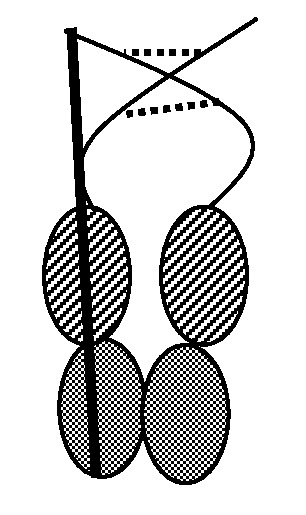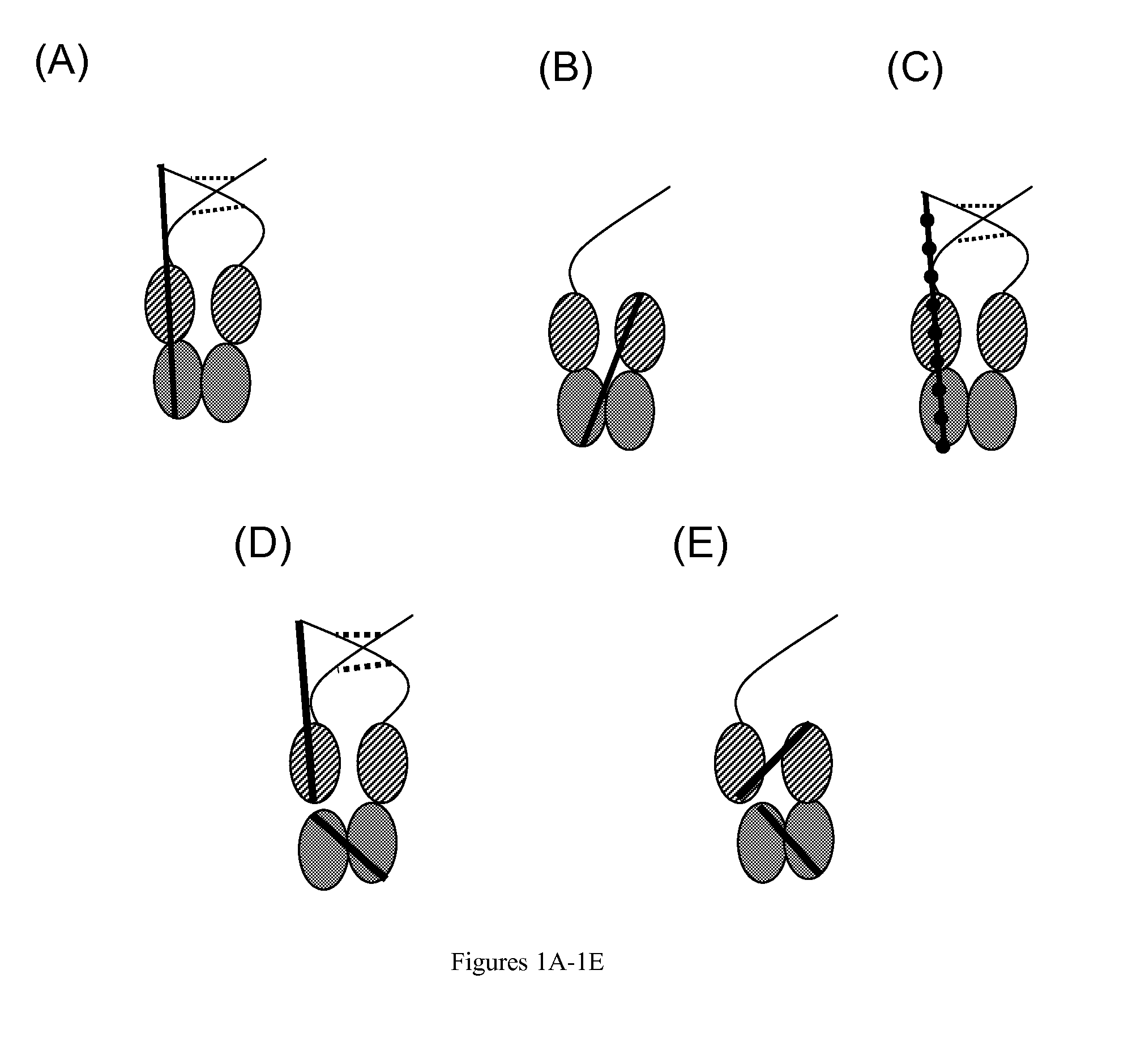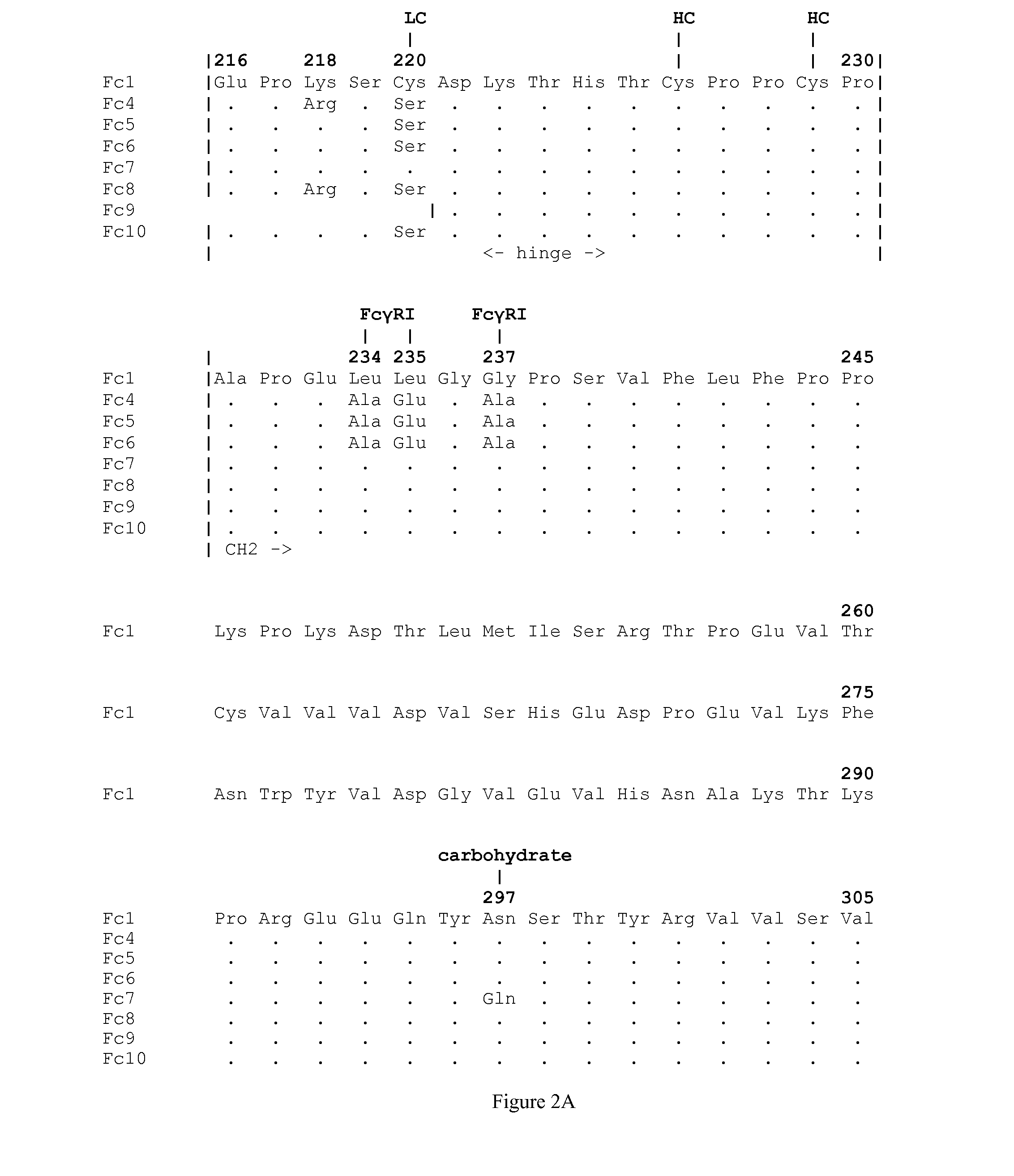Single chain fc, methods of making and methods of treatment
a single chain and molecule technology, applied in the field of single chain fc molecules, can solve the problems of antibody of lower affinity, non-covalent dimers formed, and not generally useful, and achieve the effect of improving stability and solubility
- Summary
- Abstract
- Description
- Claims
- Application Information
AI Technical Summary
Benefits of technology
Problems solved by technology
Method used
Image
Examples
example 1
Expression of scFc10.1 in CHO
[0305]Mammalian Expression Constructs
[0306]An expression plasmid encoding ScFc10.1 (shown in FIGS. 1A and 3B; SEQ ID NOs: 3 and 4) was constructed via homologous recombination in yeast with two DNA fragments encoding Fc10 (SEQ ID NO:9) connected by a Gly4Ser linker. Specifically, scFc10.1 comprises two intact Fc10 molecules connected by a 41 aa (Gly4Ser)8+Gly linker (SEQ ID NO:11). These linkers are known to be highly flexible, fairly protease resistant and relatively non-immunogenic.
[0307]In order to address the complications of cloning two copies of a long cDNA in tandem, the cloning was performed in two stages, first for the intermediate form, an Fc10 cDNA with the Gly4Ser linker and a short polylinker was inserted into mammalian expression vector, pZMP42 and, second, another Fc10 was inserted by ligation into the short polylinker. Fc10 consists of residues 216-447 of human immunoglobulin gamma1 cDNA with C220S mutation (FIG. 2). pZMP42 is a derivativ...
example 2
Expression of scFc10.2 in CHO
[0316]An expression plasmid encoding scFc10.2 (shown in FIGS. 1C and 4B; SEQ ID NOs:21 and 22) was constructed via homologous recombination in yeast with two DNA fragments encoding Fc10 (SEQ ID NO:9) connected by a Gly4Ser linker. This construct differs from scFc10.1 (as described in Example 1) in that the first Fc unit has two mutations in the hinge, substituting serines for the two cysteines, C226S and C229S, and removing the hinge entirely from the second Fc unit. The hinge is known to be important in effector function so the omission of this region is expected to alter the functionality of this form of the Fc molecule. As before, in order to address the complications of cloning two copies of a long cDNA in tandem, the cloning was performed in two stages, first for the intermediate construct, an Fc10 cDNA with the two mutations upstream, the Gly4Ser linker and a short polylinker downstream was inserted into mammalian expression vector, pZMP42 and seco...
example 3
Expression of scFc10.3 in CHO
[0321]An expression plasmid encoding scFc10.3 (shown in FIGS. 1C and 5B; SEQ ID NOs:30 and 31) was constructed via homologous recombination in yeast with two DNA fragments encoding Fc10 (SEQ ID NO:9) connected by a Gly4Ser linker. This construct differs from scFc10.1 in Example 1 in that the two Fc monomers are connected by a section of the stalk region of human CD8 alpha chain (SEQ ID NOs:32 and 33). The CD8 stalk is heavily O-glycosylated and structural analysis indicates that it is an extended structure. As before, in order to address the complications of cloning two copies of a long cDNA in tandem, the cloning was performed in two stages: first for an intermediate construct (SEQ ID NOs:28 and 29), an Fc10 cDNA with the CD8 stalk and a short polylinker downstream was inserted into mammalian expression vector, pZMP42; and second another Fc10 was inserted by ligation into the short polylinker. Fc10 and the vector are the same as described previously for...
PUM
| Property | Measurement | Unit |
|---|---|---|
| temperatures | aaaaa | aaaaa |
| temperatures | aaaaa | aaaaa |
| temperatures | aaaaa | aaaaa |
Abstract
Description
Claims
Application Information
 Login to view more
Login to view more - R&D Engineer
- R&D Manager
- IP Professional
- Industry Leading Data Capabilities
- Powerful AI technology
- Patent DNA Extraction
Browse by: Latest US Patents, China's latest patents, Technical Efficacy Thesaurus, Application Domain, Technology Topic.
© 2024 PatSnap. All rights reserved.Legal|Privacy policy|Modern Slavery Act Transparency Statement|Sitemap



